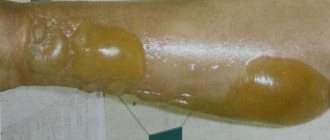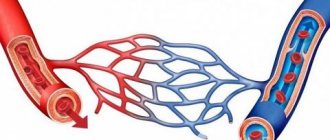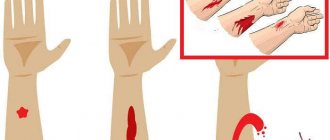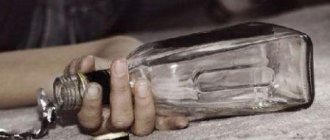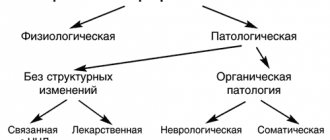Frostbite is a typical pathological problem in winter. The process of damage to the soft tissues of the body due to direct exposure to low temperatures entails a lot of problems.
The specific symptoms of frostbite, the potential list of possible complications and treatment procedures depend on the depth of tissue damage - the so-called degree.
Below, you can learn in detail about their features, find out the possible consequences of frostbite and get answers to other questions related to this topic.
In the article you will learn everything about frostbite of the skin of degrees 1, 2, 3, 4 and the distinctive signs of the degrees.
Description of the degrees of frostbite
In modern medicine, there are several types of classifications of frostbite according to a number of different characteristics. Firstly, damage from low temperatures is divided into:
- Acute cold injury;
- Freezing;
- Frostbite;
- Chronic cold injury;
- Chills;
- Cold-type neurovasculitis.
In addition, the mechanism for the development of pathology, which forms after contact frostbite or exposure to cold air currents, may differ. Also, doctors distinguish 3 basic degrees of general frostbite - mild (with frostbite of the 1st or 2nd degree), moderate (cold damage of the 1st-3rd degree) and severe (all types of frostbite, up to complete icing).
In clinical practice, a four-level gradation of frostbite is most often used , determined by the depth of tissue damage.
- 1st degree. The mildest form of frostbite, which usually passes without serious consequences;
- 2nd degree. More severe frostbite, which with proper treatment predisposes to a favorable prognosis;
- 3rd degree. Associated with partial tissue destruction, the formation of scars and other atypical objects on the skin after recovery;
- 4th degree. It poses a real threat to human life and requires immediate intensive or resuscitation therapy, often also surgical procedures.
Other classifications of frostbite can be found here.
It is often possible to accurately determine the degree of frostbite only after the warming procedure and the entry of the pathology into the reactive phase.
First degree frostbite
1st degree of frostbite is considered the mildest form of cold injury - almost every person has encountered this problem if they live in areas with the appropriate climate (in particular, harsh winters).
Frostbite of the 1st degree forms after short exposure to cold. Sometimes, this type of frostbite can occur even at above-zero temperatures, if a person is in a strong wind, gets wet, or is not dressed for the weather. Most often in this case, the fingers of the upper or lower extremities, ears, nose, and sometimes the face are affected.
Frostbitten tissues acquire a pale or even whitish tint; the process of dying of the skin does not occur. During the development of frostbite, a person feels a burning and tingling sensation in the problematic location, which is soon replaced by partial or complete numbness. In more rare cases, grade 1 cold injury is accompanied by pain and itching.
During the warming process, the affected tissues acquire a red tint, and slight swelling may form. The skin sometimes peels off, and sensitivity returns a few hours after the cold exposure is removed.
The treatment procedure for the first degree of frostbite usually does not require specialized medical regimens and can be carried out at home. Key actions include:
- Stop contact with cold air and surfaces. It is necessary to return home as quickly as possible, or go to any other warm room;
- Changing clothes. After getting into comfortable climatic conditions, you need to immediately change clothes, taking off cold clothes, shoes and, if necessary, underwear;
- Warming. The warming procedure can be carried out in a warm bath. Fill it with water at a temperature of about 25 degrees, immerse your limbs there, then slowly raise the temperature of the water over half an hour to a normal physiological level (about 37 degrees);
- Food and drink. Drink warm drinks and food immediately after the procedure;
- Bed. Cover yourself with 2 warm blankets and stay in bed for at least 1 day.
With timely first aid procedures, complications after 1st degree frostbite do not appear.
Read more about first aid for frostbite here.
Frostbite
Treatment of frostbite in the first (pre-reactive) phase. Practical experience shows that more than 90% of those affected by the cold are provided with first aid outside a medical institution and, as a rule, traditional methods are used - rubbing the affected areas with snow or woolen cloth, immersion in “ice” water, etc. In this sense, sanitary educational work among the population, especially in the Russian Federation, is important.
To this day, discussions continue on the principles of treatment of the first (pre-reactive) phase of frostbite. At the same time, it is generally accepted that the outcome of cold injuries largely depends on the nature of first aid to the victim. There is still no consensus on the advisability of immediately warming those affected by the cold. In the literature, one can increasingly find reports whose authors prefer endogenous warming of frostbitten extremities in order to restore blood circulation “from the inside.” The requirement to massage the affected limbs remains controversial.
We have personal experience in treating more than 90 victims with frostbite in the pre-reactive phase. Due to dissatisfaction with the results of warming frostbitten extremities in warm water, an attempt was made to achieve a positive effect through slow passive rewarming. Unfortunately, our first observations did not confirm the opinion that with “internal” slow, passive warming, a return to normal occurs without the development of a clinical picture of frostbite. It has been noted that when isolated from external warming (as, indeed, with rapid active warming in warm water), edema appears in frostbitten areas of the body, blisters form, circulatory and innervation disorders occur, and subsequently damage to bones and joints of varying severity develops.
In addition, we observed victims in whom frostbite due to intoxication was not recognized in a timely manner and only the appearance of swelling and blisters in the frostbitten areas was the reason for seeking medical help. There is every reason to believe that tissue warming in these patients occurred slowly due to spontaneous restoration of blood flow. Most of them had to amputate the affected limb segments due to the development of gangrene.
However, we could not categorically deny the effectiveness of the method of slow passive warming or continue to use it, since a number of other factors could influence the outcome of frostbite.
In victims with absolutely symmetrical lesions of the extremities, it was possible to use both methods. All victims were men aged from 27 to 52 years, 11 of them were found sleeping in the cold in a state of heavy alcoholic intoxication with clear signs of icy limbs. The duration of the cold action was from 4 to 8 hours, the air temperature was -30±10°C. 2 patients had frostbite of the “trench foot” type.
At the scene of the incident, cotton and gauze bandages were applied to the victim’s frostbitten limbs and he was taken to the hospital. Upon admission, the bandage was removed from the right limb and a perineural novocaine blockade of the main nerve trunks was performed. On the left limb, the condition of the heat-insulating bandage was improved and a waterproof cover was put on it. The patient was placed in a bath with water at a temperature of 38-40°C. The left limb, wrapped in a heat-insulating bandage, was constantly out of the water. The duration of the water procedure is at least 30 minutes.
Then the victim’s skin was carefully dried with dry sheets, a repeated novocaine blockade was performed, and a dry warming compress was applied. The waterproof cover was removed from the left limb and the condition of the heat-insulating bandage was improved. No massage methods were used to “stimulate” blood circulation. Replaceable warm heating pads were placed on the inner surfaces of the limbs (thigh, shoulder) in the projection of the great vessels for 5-6 hours. The first dressing was carried out after 10 hours.
Thus, the left limb was warmed slowly, “from the inside,” while the right limb was warmed quickly, “from the outside.” On the 2nd day after the cold injury, the left limb was cold, the zone of sensitivity disorders extended more proximally, more pronounced plasmorrhagia was noted, and a significant decrease in the oscillatory index and regional blood flow indicators was recorded. Subsequently, gangrene did not develop in 4 patients, but pronounced arthrogenic contractures and sensitivity disorders were observed for a long time on the slowly warmed hands. In 3 patients, gangrene of the distal phalanges of the fingers of the left extremity developed, in 3 - of both extremities, but on the left the level of its distribution was much more proximal. One patient admitted with frostbite to the level of the middle third of the forearms developed symmetrical total dry gangrene of all fingers. In victims with “trench foot,” no significant differences in the condition of the limbs were identified.
Thus, in most patients, slow passive rewarming was less effective than rapid rewarming in warm water.
We categorically object to recommendations to massage frostbitten limbs in the pre-reactive phase. Practical experience shows that if, before the victim was admitted to a medical institution, mechanical impact was applied to frostbitten areas, then, as a rule, tissue necrosis developed on them. Note that in 3 patients, the use of very cold water when thawing frozen limbs led to spontaneous rupture of the soft tissue of the segments.
Probably, these observations are clinical confirmation of the phenomenon of recrystallization during slow thawing, well known to cryobiologists. It should also be especially noted that some surgeons recommend rapid rewarming in warm water.
The objectives of treating frostbite in the first phase are:
- elimination of the etiological factor (immediate cessation of exposure to cold);
- resuscitation measures in cases of combination of frostbite with general cooling;
- novocaine blockades proximal to the frostbite zone;
- restoration of blood circulation and temperature of the affected areas by active warming in warm water.
These tasks are solved as quickly as possible and in a sequence depending on the patient’s condition and the stage (location) of first aid. The victim must be immediately placed in a warm room or in an ambulance. Carefully remove, often by cutting, frozen shoes, socks, gloves, and replace them with special or improvised thermal insulating agents. For this purpose, ambulance teams must have ready-made warm thick cotton-gauze bandages measuring 80*80*5 cm, placed in plastic bags. These bandages are used to wrap frostbitten limbs, putting plastic bags on top. Feeling, and especially kneading, frostbitten limb segments is unacceptable.
In case of frostbite and general hypothermia of the body, the following tactics are used at the scene of the incident: a sheet folded several times is generously moistened with hot water from a thermos or car radiator, wrung out and placed over the victim’s underwear (but not on the skin!) in the chest and abdomen. The existing clothes are put on top. The victim is wrapped in rubberized cloth, in which transport tires are usually carried. If necessary, perform artificial respiration, cardiac massage, and give oxygen. Recommendations to give hot tea to victims are unfounded, since they do not have a swallowing reflex and, apart from trouble, these attempts do not give anything. If possible, it is necessary to carry out novocaine case blockades proximal to frostbite zones, after pre-treating the skin with alcohol. Cardiac drugs and respiratory analeptics are administered intravenously. Thus, the victim is prepared for transportation, even a long one.
In the hospital emergency room, all clothing and bandages are removed from the victim, the general condition and associated injuries, especially cranial injuries, are determined, pulse, pressure, rectal temperature, etc. are measured. At this time, a bath is prepared with water at a temperature not lower than 35 ° C ( up to 40°C). Before immersing the victim in water, perineural novocaine blockades of the main nerve trunks of the affected limbs are carried out, cardiac drugs are administered intravenously (if this is not done during transportation of the patient), heparin, and antispasmodics.
It should be emphasized that in the treatment of frostbite of the first (pre-reactive) phase, an important role is played by novocaine case and perineural blockades before warming in water. It is well known that the process of restoring blood circulation is always accompanied by pain and vasospasms. As a result, victims, even those in a state of heavy alcoholic intoxication, always try to prevent the provision of assistance, thereby injuring the affected limbs, including “fractures” of frozen fingers. It is noteworthy that, being a technically simple manipulation, novocaine blockades have a beneficial effect on the entire subsequent course of the process. Clinically, this is clearly confirmed by the absence of pain during warming, the rapid restoration of temperature and blood circulation in the affected segment of the limb, a significant reduction in the area of total necrosis or the absence of it in the third phase of frostbite. Another thing is also very important: after novocaine blockades and subsequent warming in warm water, vascular spasm does not occur. This is evidenced by the results of capillaroscopic, X-ray angiographic and other studies.
In order to completely warm frostbitten limbs and the patient himself in a warm bath, it takes from 30 minutes to 1.5 hours, i.e. rushing during this procedure is unacceptable. Signs that require stopping the water procedure include skin hyperemia, the appearance of edema, free active movements in the interphalangeal joints, a feeling of “softness” of the affected area, and the presence of a clear boundary of the frostbite zone.
The victim is carefully removed from the bath, placed on a couch or stroller, the body is carefully, especially frostbitten areas, dried with a sheet, covered with warm blankets and UHF therapy is prescribed in weak doses to the affected areas. Either dry warming compresses or gauze wipes soaked in a 1:5000 solution of furatsilin with the addition of alcohol are applied to frostbitten limbs, a thick layer of cotton wool is placed on top, secured with weak rounds of bandage, and plastic bags are put on the outside. The victim is taken to the ward, where frostbitten limbs are given an elevated position. In the projection of the main vessels (inner thighs, axillary areas), heating pads wrapped in towels are placed. Infusion therapy is prescribed. Intra-arterial administration of antispasmodics and other drugs that improve blood circulation is useful, but practically difficult to implement.
When there is a mass intake of frostbite victims, medical triage is carried out according to generally accepted rules. Stop bleeding of all types. Thick cotton-gauze bandages (dry warming compresses) are applied to frostbitten limbs. Antishock therapy is carried out. Without removing the bandages from frostbitten limbs, they provide qualified and specialized assistance.
Treatment of frostbite in the second (paranecrotic) phase is a continuation of the treatment measures carried out in the first phase. The first dressings are carried out, as a rule, 8-10 hours after the victim’s admission. The bandages are removed easily and painlessly. The extent of the lesion is determined, and the degree of frostbite is approximately determined. The bubbles are incised at the base, their contents are evacuated by rotating the swabs. The covers of the blisters themselves should not be removed during the first dressings, since they are a biological protection of the dermis. It is useful to carry out oxygen barotherapy during dressings.
External treatment of frostbite in the paranecrosis phase should not be given fundamental importance due to severe plasmorrhagia. Usually bandages with antiseptic solutions are applied (but not ointment); immobilize the affected limbs with plaster splints in an average physiological position.
Taking into account the fundamentally important concept of the paranecrotic state of the affected tissues in the second phase, the main objectives of drug treatment are to influence intermediate metabolism in tissues and improve blood supply to frostbite zones. At the same time, general changes in the body are corrected: replenishment of plasma loss, anti-inflammatory treatment, anticoagulant therapy, combating swelling of frostbitten tissues.
This is achieved using infusion therapy. The daily volume of administered fluid is up to 2000 ml. This volume should be increased very carefully due to pronounced swelling of frostbitten tissues. In any case, it is necessary to take into account the volume of blood volume, hourly diuresis during infusion and the use of Lasix. The infusate contains plasma-substituting agents - native plasma, albumin, rheopolyglucin, hemodez. Activators of fibrinolysis have proven themselves well - fibrinolysin, streptokinase. Papaverine hydrochloride is usually prescribed as a vasodilator; According to our data, Cavinton, which is administered in fractional doses 3 times a day at a dose of 1 mg per 1 kg of the patient’s body weight, has shown high effectiveness. Currently, there is no doubt about the need to prescribe anticoagulants, of which preference should be given to heparin. In the first hours after the injury, immediately administer 15,000 BD of heparin, and then during the day - another 15,000 units, but in fractions, 1 ml each. Due to the fact that indirect anticoagulants are prone to accumulation, accompanied by diffuse, difficult-to-control bleeding from frostbitten areas, we abandoned their use, easily achieving a correctable decrease in the prothrombin index with the help of heparin.
A highly effective treatment for patients with frostbite in phase I is the kinin inhibitor contrical, which prevents tissue necrosis. Contrical is administered in doses of 10,000-15,000 units, with preference given to the intra-arterial route of administration. To influence intermediate metabolism in tissues, it is advisable to use vitamins C, Bi, Bg, Vi, E, and nicotinic acid.
In the paranecrosis phase , in addition to oxygen barotherapy, physiotherapy for frostbite is carried out. Preference is given to methods that affect blood and lymph circulation in frostbitten tissues, have a stimulating effect on the autonomic nervous system, and provide anti-inflammatory and resorption effects. These include UHF therapy, Sollux lamp, electrophoresis of hydrocortisone or other anti-inflammatory drugs, and diathermy. In the phase of paranecrosis, one should refrain from prescribing physiotherapeutic procedures that promote drying and accelerate tissue rejection, such as radiotherapy and ultrasound.
Treatment of frostbite of the third phase . In the stabilization phase, the degree and boundaries of frostbite are revealed. Frostbite of the II degree and limited lesions of the III degree are subject to outpatient treatment, which includes local therapy. Exercise therapy (development of movements in the interphalangeal joints) must be prescribed in combination with procedures such as thermal baths, paraffin and ozokerite applications, and in the absence of wounds, mud therapy is performed.
Treatment of osteoporosis is carried out using calcium chloride electrophoresis. To treat wounds of limited size, ointment dressings are used to stimulate tissue healing. Victims with extensive frostbite of the third degree are sent to a hospital, where, in addition to the above measures, detoxification therapy is carried out (hemodesis 200 ml 2 times a day with an interval of 12 hours); in case of severe anemia and hypoproteinemia, blood components and products are administered along with anticoagulants: freshly washed red blood cells, albumin, native plasma. In order to increase the body's immunoreactivity in phase III of frostbite, immunological agents and preparations (blood, convalescent plasma, antistaphylococcal γ-globulin, antistaphylococcal plasma) are indicated. Broad-spectrum antibiotics are prescribed, and the administration of vitamins and Cavinton is continued. In addition to and along with the indicated conservative treatment, in phase III of frostbite the question of necrocectomy and amputation arises.
Treatment of frostbite in the fourth phase - the phase of its immediate consequences - is aimed at restoring the function of the affected limb and healing the wounds. The first problem is solved with the help of exercise therapy (joint development), massage, and physiotherapeutic procedures. Treatment of wounds, usually accompanied by osteomyelitis, presents great difficulties due to angiotrophic disorders. An important role in complex treatment is played by the local use of proteolytic enzymes. Possessing the properties of a “chemical knife”, an antiseptic protector and a regeneration stimulator, Profezim preserves viable tissue as much as possible, which is especially important for frostbite of hand segments.
The effectiveness of treatment largely depends on the timing of surgery, the radicality of removal of non-viable tissue and the surgical technique.
Surgery. According to the literature, surgical treatments for frostbite are divided into three groups: primary surgical treatment (necrotomy and necrectomy), amputation, reconstructive and corrective operations. Agreeing with the validity of this division, we believe that the primary surgical treatment of frostbite is more correctly understood not as necrotomy and necrectomy, but as dissection of the skin and underlying tissues before the development of necrosis for the purpose of decompression and improvement of microcirculation. This operation should be performed no later than the 3rd day after the injury. Apparently, in a semantic sense, it is more correct to call it preventive surgical treatment of frostbite. There are significant differences between it and the surgical treatment of frostbite according to Ariev in the purposes and timing of the operation, indications and topic.
Preventive surgical treatment of severe frostbite, in its essence, is an exclusively preventive measure (prevention of gangrene), while necrotomy involves accelerating the development of gangrene. Of course, in the area of subsequent necrosis, preventive treatment of frostbite plays the role of necrotomy, which is also one of its advantages.
Preventive surgical treatment of frostbite - dissection of soft tissue in the affected area. Attempts to call this operation with o, as V.P. Kotelnikov does (1988), do not stand up to criticism from an anatomical point of view. It is undertaken with the aim of eliminating intense edema, associated microcirculatory disorders and preventing the development of gangrene. Indications - pronounced swelling of the segments, execution time - from several hours to 3 days from the moment of injury, i.e. in the second phase of frostbite. Tissue dissection to its full depth is carried out after treating the skin with antiseptic agents and opening the blisters. Incisions are made taking into account the anatomical and topographical features of the area, so as not to damage the tendons, blood vessels and nerves. The edges of the wound are separated, the underlying soft tissue, which usually has the appearance of a jelly-like mass (fiber) or fish meat (muscle), is loosely tamponed. At this point, bleeding from the wound may occur, which is stopped by ligating the vessels. Apply bandages with alcohol or aqueous solutions of antiseptics; ointment bandages are contraindicated. It is necessary to pay attention to ensure that the bandages do not compress the limb. In order to prevent compression, it is recommended to use gauze pads as a dressing material. The limb is immobilized with a shallow plaster splint in an average physiological position.
Necrectomies and amputations for frostbite, depending on the timing of implementation, are divided into early, delayed and late. Necrectomy refers to the excision of dead tissue in the affected area. As a rule, it is performed along the demarcation line and without replacing the wound defect. The purpose of amputation of a frostbitten limb segment is not only excision of the necrotic segment, but also the creation of a functional stump, the wound defect of which is replaced with local tissues or using skin grafting.
Indications for early necrectomy and amputation are total damage to large segments of the limbs, toxemia, the threat of sepsis and death. The timing of operations is 3-14 days after injury. Before early necrectomy or amputation for diagnostic purposes, necrotomy is performed; lack of sensitivity, bleeding, tissue in the form of boiled meat indicate the irreversibility of the damage, i.e. IV degree of frostbite.
Delayed necrectomies and amputations are performed within 15 to 30 days after injury. Indications for them are gangrene with clear boundaries of the affected area.
Late necrectomies and amputations are carried out within a period of 1 month or later. Indications: gangrene against the background of severe osteolysis and osteonecrosis.
You should pay attention to some features of the technique of necrectomy and amputation. First, on the eve of the operation, it is necessary to thoroughly wash the demarcation line with detergent solutions, remove exfoliated epidermis, treat the limb with antiseptic agents and apply a sterile bandage. Secondly, the level of amputation must be chosen in such a way that the edges of the wound can be compared without the slightest tension. Thirdly, for frostbite, the method of choice is the skin-plastic amputation method; Fascio-, myo- and osteoplastic primary amputations are not indicated. Fourthly, during necrectomy and amputation of the tubular bones of the feet and hands, you should under no circumstances use instruments such as Liston or Luer cutters. “Biting” bones is associated with their crushing, the appearance of longitudinal cracks and small bone fragments, which causes additional injury and contributes to the subsequent development of chronic osteomyelitis.
Restoration of the skin lost due to frostbite is carried out using various types of skin grafting. Unfortunately, we have to admit that free skin grafting with a split skin flap in most cases gives unsatisfactory results. The effectiveness of skin grafting largely depends on a fairly complete excision of all non-viable tissue, which in turn makes it possible in some cases to replace the wound defect with local tissue. Until now, an unsolved problem is the treatment of defects of the plantar surface of the heel region, accompanied by osteomyelitis.
Reconstructive operations for frostbite can increase the functional ability of the stump and (or) carry out cosmetic rehabilitation. These operations include plastic surgery of the ears and tip of the nose, phalangization of the fingers, distraction lengthening of limb segments, autotransplantation of the toes onto the hand, etc. Reconstructive operations must be performed in specialized surgical departments. An indispensable condition for the preoperative preparation of the patient is complete healing of wounds, complex treatment to improve regional blood circulation (drug therapy, physiotherapeutic procedures, massage, electrical stimulation, oxygen barotherapy, spa treatment). The specific method or method of operation is chosen strictly individually, based on the characteristics of the stump, its functional state, as well as taking into account the possibility of subsequent prosthetics. Complex reconstructive operations for frostbite should not be performed earlier than 2-3 months after the injury.
Second degree frostbite
Frostbite of the 2nd degree forms after a longer exposure to cold tissue. The lesion affects not only the fingers and protruding parts of the body, but also the hands, lower legs and feet. Often, the cause of this type of frostbite is not only cold air, but also direct contact with cold objects and substances - for example, snow.
Signs of 2nd degree frostbite are more varied compared to the mild form of the pathology, but it begins identically - paleness of the skin, loss of sensitivity in the affected tissues. Burning, tingling and numbness are more pronounced. After some time, the epithelium acquires a pronounced bluish-marble hue.
The main differences from the first degree of frostbite are visible during the warming process - pain occurs almost immediately . The skin becomes not just reddish, but purple, and bubbles may form in the affected areas - they look like classic blisters, containing a clear hemorrhagic-type liquid inside.
Skin itching and burning accompanies a person for several more days after frostbite; tissue sensitivity will return gradually, from 5 to 10 hours. The recovery process for stage 2 frostbite can take up to 2 weeks - this is how long it will take for the tissues to completely restore their original appearance.
The first aid procedure in the initial stages is identical to the therapy for stage 1 cold injury. The only difference is the ban on artificial warming, which can damage blood vessels and cause a secondary bacterial infection.
After getting into the room, changing clothes and drinking plenty of warm drinks, you need to apply a heat-insulating bandage made of layers of gauze and cotton wool to the affected area, go to bed under a warm blanket and call a doctor at home - he will prescribe a further course of drug treatment.
With proper and timely therapy, the prognosis for recovery of patients with degree 2 frostbite is conditionally favorable - only in 15 percent of cases the development of local allergies, bacterial infections, and exacerbation of chronic diseases is observed.
Signs and clinical manifestations
All stages of frostbite have their own characteristics and are expressed by certain symptoms:
| Damage phase | Clinic |
| 1st degree | The first stage is characterized by impaired blood circulation in the injured area. During warming, the victim feels a burning sensation, tingling and pain. The frozen area is manifested by redness of the skin and slight swelling. There is no necrosis of the epidermis or dermis. Sensitivity in the damaged area of the body remains. |
| 2nd degree | Signs of frostbite of the 2nd degree of cold injury are severe itching, local increase in temperature, pain. Skin death reaches the basal layer. On days 1-2, sometimes 3-4, blisters with translucent liquid inside appear at the site of frostbite. When the blisters burst, the inflamed papillary dermis is exposed, which is accompanied by severe pain. Swelling of the skin and tissue extends beyond the damaged area. No scars remain on the affected area. |
| 3rd degree | The third phase is accompanied by serious damage to the epidermis and dermis. Characteristics of 3rd degree frostbite: the skin is completely devoid of sensitivity, cold to the touch and has a bluish color. When warmed, blisters with bloody contents form. The swelling extends far beyond the frostbite area. After a little time, the skin acquires a bright red tint, which is replaced by a black scab - these are manifestations of necrosis of the dermis and subcutaneous tissue. After the dead tissue is rejected, scars and granulations form in the problem area. |
| 4th degree | The fourth stage of cold injury is accompanied by the death of not only the skin and tissues, but also muscles, tendons and even bones. The patient completely loses sensitivity in the damaged area. Hemorrhagic formations (blood blisters) may appear on blue skin at the beginning of the reactive period. Then the necrotic tissues turn black and a scab appears, the rejection of which can take months. The rejection process is accompanied by complications in the form of gangrene, osteomyelitis, phlegmon, and tendovaginitis. |
Third degree frostbite
The third degree of frostbite is characterized by serious cold damage, affecting not only the outer skin, but also the middle and deep layers of soft tissue.
As pathology develops, the epithelium very quickly loses sensitivity, its color becomes bluish with marbled and gray shades. The pain syndrome is quite severe, accompanied by itching, tingling and numbness.
In the initial period of development of stage 3 frostbite, large blisters and swellings form on the surfaces of soft tissues that have been negatively affected. Inside they are filled with a liquid substance mixed with blood. The bottom of these formations has a pronounced purplish-blue tint, and there is no sensitivity when pressure is applied to it.
Due to severe cold damage, the entire top layer of skin dies, and the soft tissues themselves are partially destroyed . During the painful healing process, which lasts up to 1 month, the damaged elements are rejected with the formation of large scars and granulations. If the horny plates of the nails have been frostbitten, they do not return to normal for up to six months, slowing down their growth and producing a deformed structure.
First aid options for degree 3 frostbite are significantly limited - a change of clothes, a hot drink (in the presence of clear consciousness and a normal swallowing reflex), as well as the application of a heat-insulating bandage made of several layers of gauze, cotton fabric, cotton wool and an upper edging in the form of polyethylene.
In this situation, independent artificial heating, as well as various rubbings, are prohibited - you must call an ambulance, which will take the victim to the hospital for intensive care.
Possible complications are generalized skin lesions with the need for plastic surgery, increased risk of cardiovascular diseases, secondary bacterial infections against the background of impaired soft tissue integrity.
Principles of treatment
Long-term treatment under medical supervision is required to restore tissue. It is necessary to clean those areas that cannot be restored naturally and create optimal conditions for further wound healing.
The main techniques used in the treatment of third-degree frostbite are presented in the table:
| Title and photo | Short description |
| Removing Bubbles
| The swollen areas are sanitized and the accumulated fluid is pumped out. |
| Antiseptic treatment
| To disinfect the skin, antiseptic agents are applied in the form of sprays or solutions. |
| Anesthesia
| To relieve discomfort, painkillers are used in the form of sprays, tablets and injections. |
| Taking antibiotics
| There is a risk of developing inflammation with the addition of infection, therefore, for prevention purposes, penicillin or other broad-spectrum antibiotics are prescribed. |
| Stimulation of blood circulation
| To restore tissue nutrition, drugs that stimulate blood flow are prescribed. Intravenous infusions of plasma substitutes may be given. |
| Removal of necrotic tissue Areas of necrosis are removed surgically. | Dead areas are surgically trimmed and, if necessary, sutured. |
| Physiotherapeutic procedures
| To accelerate tissue regeneration, hardware procedures are prescribed, for example, UV irradiation in suberythemal doses, thermal and electrical effects. |
| Immobilization
| Until the regenerative processes are completed, it is recommended to limit the mobility of the damaged area. In some cases, a plaster cast is applied. |
| Using healing ointments Levomekol ointment will help relieve pain and inflammation. | After stopping the necrotic process, regenerating ointments with an antimicrobial and analgesic effect, for example, Levomekol and Oflocaine, can be applied to the wounds. |
| Diet therapy
| To restore tissue and strengthen the body, an increased content of protein and vitamins in food is required, so a special diet is developed for patients. |
Treatment with folk remedies in the form of baths with decoctions, rubbing with alcohol, and the use of fatty ointments and creams is strictly prohibited. Such measures will only intensify pathological processes and contribute to the development of complications. It is impossible to do without medical care for such injuries; all prescriptions must be made by a qualified doctor.
Fourth degree frostbite
Stage 4 frostbite is less common than grades 1-3, but has the most serious consequences for the human body. Quite often, such cold damage is combined with milder degrees, and it affects large areas of the body, up to 40-50 percent of the skin area.
You will be interested...
Symptoms and treatment of facial frostbite The general temperature of the victim drops to 31 degrees Celsius or lower. There is almost always no consciousness, the skin is not only very cold, but also has a dark blue color, closer to black shades. Basic vital signs deteriorate significantly - the pulse slows down to 35 beats per minute, blood pressure decreases greatly, breathing is very weak and rare (up to 4-5 inhalations and exhalations per minute).
Severe frostbite is often combined with complete icing of part of the epithelium , destruction of the skin and soft tissues occurs, and cartilage, joints, and bones can be affected by the pathological process. Immediately after the start of warming, extensive swelling forms, rapid necrosis of localized structures begins, accompanied by extremely severe pain, a complete lack of tactile sensitivity, an “oxygen debt” of the affected tissues is formed, as a result of which hypoxia sharply increases.
Systemic pathological factors, in particular poisoning of the bloodstream with autolysis products at the cellular level, begin to have a significant impact. All this is accompanied by metabolic disorders and a slowdown in metabolic processes, up to their complete stop.
Primary care for a victim with degree 4 frostbite consists of the maximum possible thermal insulation of the affected tissues from the external environment to prevent them from freezing, as well as immediate hospitalization in a hospital - it is no longer possible to go home, since the person requires resuscitation therapy. No other actions should be taken - medications, rubbing, drinking and other procedures are prohibited due to the high risk of death for the patient.
Possible complications include:
- Systemic necrosis of the skin and soft tissues;
- Development of gangrenous processes with the need for amputation of body parts;
- Development of cardiovascular pathologies (up to cardiac arrest), renal or liver failure;
- Stopping breathing;
- Death.
Complications and consequences
Moderate and severe degrees of frostbite can lead to the most serious complications, even if medical therapy and first aid were carried out efficiently and in a timely manner. In its absence, the risks of developing a number of pathologies increase significantly, some of which directly threaten human life.
Typical consequences include:
- Weakening of local and general immunity, which entails exacerbation of chronic diseases and the appearance of various syndromes;
- Secondary bacterial infections caused by pathogens entering the bloodstream and soft tissues;
- Various superficial defects of the skin - from dermatitis and eczema to pathological changes in the structure of the epithelium (scarring, etc.), requiring plastic surgery for tissue transplantation;
- Necrosis of soft structures with the need for their surgical removal;
- Cardiovascular pathologies;
- Kidney and liver failure, which develops as a result of the systemic negative impact of cold on the body;
- Development of gangrene, the only cure for which is amputation;
- Formation of sepsis in cases of severe forms of frostbite;
- Critical drop in vital signs of blood pressure, respiration, pulse;
- In the absence of first aid in stage 4 frostbite - a drop in body temperature below 24 degrees, disruption of the medulla oblongata, respiratory arrest and clinical death.
When should you see a doctor?
Modern medicine recommends contacting a medical specialist in any case of frostbite - often patients engaged in self-diagnosis and home treatment are not able to correctly assess the degree of cold damage to tissues, which entails an increased risk of complications. It is mandatory to undergo examination in the following situations:
- If there is a suspicion of frostbite of degree 2 or higher. If blisters with transparent or bloody contents have formed in the affected areas, the tissues and skin have darkened significantly with the formation of edema, other symptoms of moderate or severe forms of frostbite are detected;
- If there is no positive effect of home treatment. If first aid procedures do not help and the patient becomes worse, then hospitalization in a hospital is necessary;
- With extensive tissue damage. If the area of frostbite exceeds the palm of an adult, then regardless of the degree of frostbite, you should consult a doctor;
- In case of frostbite in children or elderly people. Particular risk groups are those under 12 and over 50 years of age.
Features of frostbite of body parts
Frostbite of individual parts of the body has its own characteristics and course depending on the degree of cold damage.
Hands
The upper extremities are more likely than other parts of the body to suffer from frostbite. This is facilitated by the thinner structure of the tissues and the close proximity of the vessels, as well as ignoring the wearing of mittens or gloves during frost or simply too cold, windy and humid weather. In the first degree of frostbite, the fingers and part of the hand turn white, a slight tingling and burning sensation of the skin is diagnosed, and during the process of warming up, the upper extremities turn red very quickly, a strong burning sensation is felt in the soft tissues, and the fingertips lose sensitivity for 1-2 days;
Legs
The lower extremities suffer from frostbite less often than the hands, but the main provoking factor in the development of cold injury is uncomfortable, tight and wet shoes, as well as the lack of active movement.
The victim rarely pays attention to mild forms of frostbite on the legs, in contrast to the hands, which are used more often in everyday life. The result is sad statistics - the largest number of amputations due to gangrenous processes in soft tissues occur in the lower extremities;
Head
Frostbite of the head deserves special attention. If in mild forms of cold damage it is mainly the ears, nose, cheeks and face that suffer, then, starting from the 2nd stage of frostbite, the risks to the health and even life of the victim increase significantly, since the pathology is often combined with hypothermia of the head, leading to the development of inflammation of the meninges ( its soft external structures). Moreover, if assistance is not provided and the temperature of this part of the body drops to 24 degrees Celsius, the work of the elongated structure of the above-mentioned organ is disrupted, which can lead to respiratory arrest and clinical death.
Prevention measures
To protect against frostbite, especially such serious ones, you need to think in advance about protecting the body from exposure to adverse factors.
To prevent cold injuries, the following recommendations should be used:
- Minimum exposure to frost. During the cold season, it is better not to go outside in severe frost, as well as in damp and windy weather. Try to go into the warmth as often as possible.
- Limit contact with cold surfaces. Avoid sitting on cold surfaces, especially metal. If you need to carry an object for a long time, try to change your hand to warm it up.
- Thermal underwear. Wearing thermal underwear underneath will reduce your heat loss. On top, put on a few more thin but warm sweaters. Multi-layering is the key to retaining heat.
- Protection for vulnerable parts of the body. Be sure to additionally insulate your legs, arms, and head.
- Comfortable shoes. The leg should remain free, nothing should restrict movement. Pay special attention to the insulation of the sole.
- Preventing body exhaustion. You should not be exposed to intense exercise, stress, or starve yourself before going out into the cold. An exhausted body loses heat much faster and is not able to compensate for its deficiency using its own resources.
- Physical warm-up. Simple movements to knead the body will improve blood circulation and internal heat production.
- Preventing vasodilation. Stop drinking alcohol, coffee, and smoking. If you are taking medications with similar properties, this should be taken into account when preparing your wardrobe for going out.
- Timely response. If you notice the first signs of frostbite, you should immediately go into heat, stretch the stiff areas, and, if necessary, go to the hospital.
You can get more information about third degree frostbite by watching the video in this article.

